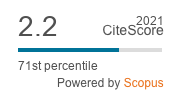Roles of Sapa Tambon in Small Scale Water Resources Development in the Northeast
Abstract
The aim of this research project is primarily to understand the ideas underlying, and the implemention of plans for, the development of small scale water resource by Sapa Tambon, as well asto delineate the factors affecting their role in this task. The Study cover 60 small scale water resources sampled from those scattering in 16 provinces in the Northeast. The result of this study indicates that Sapa Tambon in the neighbourhood of small scale water resources in the Northeast play less of a role in their development than we would expect. Ideas and practices requiring modification are those relating to land appropriation, that is, distribution of an appropriate piece of land to each household in the vincinity of the water resource (whose supply of water is not sufficient during the dry season). Land distribution should be based upon the basic needs of each household. Factors influencing the role of Sapa Tambon in the development of water resources include the physical character of the resources; economics, social and population conditions; and group formation of the population in the community. The physical features of water resources that influence the role of Sapa Tambon in their development include the adequacy of water supprly, capacity (500,000m(3) or more) and availability of supply canals.Downloads
Published
01-01-1984
How to Cite
Abhabhirama, A. (1984). Roles of Sapa Tambon in Small Scale Water Resources Development in the Northeast. Kasetsart Journal of Social Sciences, 5(1), 41–56. Retrieved from https://so04.tci-thaijo.org/index.php/kjss/article/view/243297
Issue
Section
Research articles
License
This is an open access article under the CC BY-NC-ND license http://creativecommons.org/licenses/by-nc-nd/4.0/









